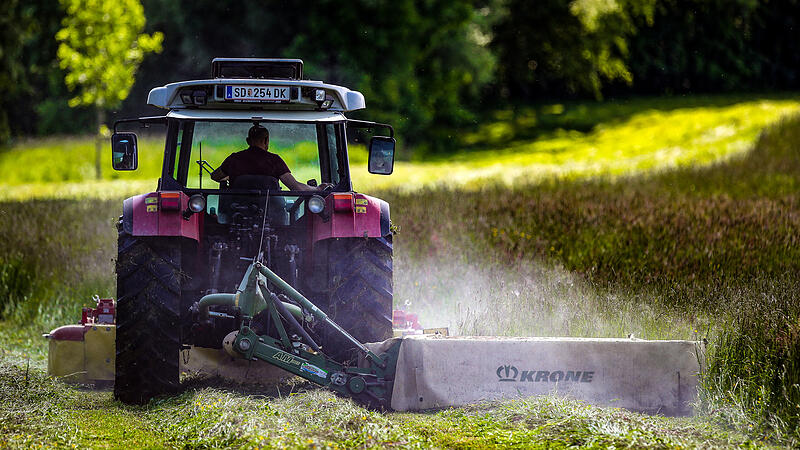Agriculture has undergone a dramatic upheaval since 1945. Digitization and globalization are now increasing the pace – and opening up new opportunities. Climate change and bureaucracy interfere. Where the journey will go is the subject of Austria’s largest trade fair from November 23rd to 26th, the Agraria in Wels.
It is undisputed that specialization and mechanization in the agricultural sector will continue to increase. In vegetable growing, the first robots are rolling across the fields. In Wels, the audience should be able to see and understand the possibilities that open up in the barn and outdoors. There will be a lot of room for an exchange of views, because new, strict rules will apply to most sectors with the new EU agricultural policy including the environmental program from January 1, 2023 and with the environmental and climate protection goals of the “Green Deal”.
Download to the article


Agricultural sector at a glance
PDF file from 11/18/2022 (4,360.35 KB)
Open PDF
The inflation issue
The social framework is currently not very good, says Michael Wöckinger, cattle expert at the Upper Austrian Chamber of Agriculture. Their teams of consultants are on a large scale in Wels. Wöckinger specifically: “When it comes to animal husbandry and climate protection, many farmers feel that it’s only going against them.” In the milk sector, which is very important because of the landscape and tourism, prices have risen, but so have the costs. “Everything will now depend on how consumption reacts to inflation,” says Wöckinger. Unfortunately, there is a noticeable trend towards cheap food. The high energy costs will not have an impact on most farms until 2023. However, compared to other sectors, agriculture is well-armed. Many companies generate their electricity from the sun and heat from their wood.
In animal husbandry, the challenges are broad because non-governmental organizations have pushed through more animal welfare, such as the ban on tethering cattle. Pig farmers are worried because they need to increase the space in their barns and get rid of fully slatted floors. “Panic is absolutely out of place,” says Hans Schlederer, managing director of the largest pig marketer, the Austrian pig exchange. There are transition periods until 2039, and politicians have filled the funding pots for investments. The Agraria show technical solutions.


Crisis-proof pig fattening
In Austria, too, farmers are getting out of the breeding or fattening of pigs. The division is well prepared for the regulatory steps due to animal-friendly company sizes. On average, the farmers have 80 percent of their own feed, only need to buy a little expensive feed, and produce a large part of the fertilizer with the animals. Schlederer: “Ten years ago, we jointly procured photovoltaic systems for 600 pig farmers. Most of them heat with wood chips. The high energy prices are no longer so relevant.” The specialized fattening industry in other countries is more affected by high prices and, due to a lack of their own forage areas, has problems with liquid manure disposal and emissions. “I recommend relative calm. The others first have to go where we already are with our circular economy,” says Schlederer.
According to arable farming expert Helmut Feitzlmayr, the prospects are similarly promising in plant production, despite the cost and regulatory pressure. One reason is that livestock farmers have their own fertilizer for their fields. Will crops collapse among cattleless farmers in 2023 because they save on expensive fertilizers? “Our companies stocked up well in good time,” says Feitzlmayr. In the medium term, the lack of expensive phosphorus and potash is causing concern.
The soybean as a fashionable fruit
The soybean is the absolute fashion fruit: it will probably exceed the magic limit of 100,000 hectares under cultivation in 2023 (67,000 in 2021) because it produces the nitrogen fertilizer itself in its root nodules. A plus is that the seed industry is constantly developing better, regionally adapted varieties, says Feitzlmayr. The demands are growing because the EU is restricting the use of fertilizers and plants. It remains to be seen to what extent it is possible to protect arable plants against fungi, weeds and animal pests and against climatic extremes such as drought, storms and heavy rain through selection. “More and more active ingredients are being banned, which is why we are fighting more and more resistance,” says Feitzlmayr. If the dosage is too fine, the weeds will recover and become immune to active ingredients. There is also an excess of bureaucracy. Rules are all right, but in the end society expects “decent harvests” above all, says the crop cultivation expert.
What technology can support will be seen in Wels, such as the selective use of nutrients and plant protection, digitally controlled. “All of this is not yet ready for broad practice, but it has to be implemented in the next few years.” Modern hoeing technology, which fights weeds with centimeter precision without chemicals, is already on track.
Source: Nachrichten




